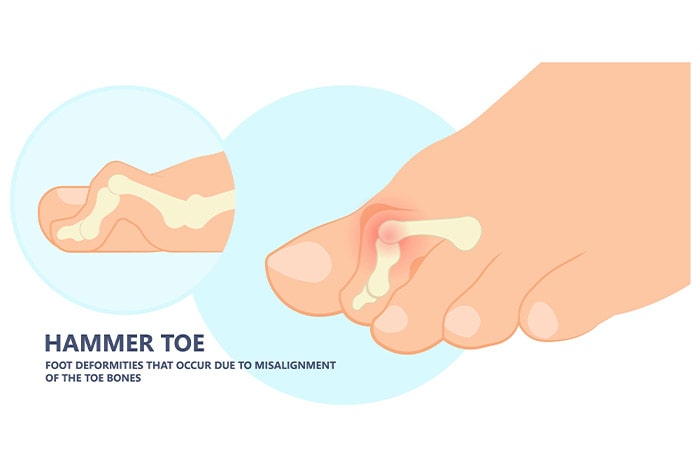Hammer toe is a foot deformity that typically affects the second, third, or fourth toes. It results in an abnormal bend at the middle joint, making the toe resemble a hammer. This condition often leads to complications affecting both foot aesthetics and functionality, ultimately impacting overall comfort. Consequently, it is essential to address these issues promptly to maintain overall foot health and mobility.
What is Hammer Toe?
- Deformity Characteristics: Hammer toe occurs when the toes become bent at the first joint, raising the toe and making it more prominent. This bending can affect one or several middle toes.
- Friction and Pressure: The prominence of the toe can lead to continuous rubbing against the shoe, causing discomfort and potential formation of a bursa, akin to a deep blister.
Potential Complications
- Bursitis: The inflamed bursa, known as bursitis, can result in pain and swelling at the affected joint.
- Corns and Calluses: Frequent friction leads to the development of hard skin, corns, or calluses on the joints or tips of the toes.
- Metatarsalgia: This toe deformity often shifts pressure distribution to the ball of the foot, leading to pain and inflammation known as metatarsalgia.
- Altered Gait: Long-term hammer toe can lead to changes in walking patterns, potentially affecting the posture and leading to additional strain on the lower limbs.
Management and Treatment Options
- Protective Gear: Products like Gel Tube and Soft Gel Toe Support offer cushioning and reduce pressure on the affected toes.
- Padding: Toe Foam and Toe Protector are designed to protect the toes from further friction and pressure.
- Footwear Choices: Wearing shoes with a wide toe box, low heels, and good arch support can prevent aggravation of the condition.
- Surgical Intervention: In severe cases, surgery might be necessary to correct the deformity and alleviate pain.
Seeking Expert Care
Early intervention by a healthcare professional is crucial for effective management of hammer toe. A podiatrist or chiropodist can provide specialized care, recommend appropriate treatments, and offer guidance on footwear choices. For more information and to find local services, visit the NHS website.
Additionally, for more comprehensive care, explore a variety of supportive products in our Hammer Toe & Ball of Foot Products section , and if needed, you can also conveniently locate local pharmacies that sell Profoot products using our Pharmacy Finder.
